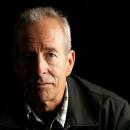First Impression: Revelatory Bob Dylan ‘Bootleg’ series Vol. 12
- Share via
There’s a story about Paul McCartney that during the Beatles’ heyday in the 1960s, he once hired an assistant to follow him around and jot down every idea that came into his head, lest he might lose track of any of them.
Odds are it’s apocryphal, but it continues to circulate because fundamentally it’s entirely believable. New ideas do indeed seem to fly so fast and furious with the most creative artists during their greatest periods of innovation.
Bob Dylan, by all counts, didn’t have any such lackeys on staff despite his phenomenal streak of barrier-busting in the 1960s, when he sang “I need a dumptruck, baby, to unload my head” in the song “From a Buick 6.”
SIGN UP for the free Essential Arts & Culture newsletter >>
Fortunately, many examples of his moments of inspiration were caught on recording tape, and that’s at the heart of “Bob Dylan — 1965-1966 The Cutting Edge: The Bootleg Series Vol. 12.” The collection focuses on his three landmark albums recorded over a remarkably brief 14 months from January 1965 to March 1966.
Those would be “Bringing It All Back Home,” “Highway 61 Revisited” and “Blonde on Blonde,” a period of extraordinary musical, instrumental and technical growth perhaps rivaled in pop music only by the Beatles’ hat trick of “Rubber Soul,” “Revolver” and “Sgt. Pepper’s Lonely Hearts Club Band.” And there will be plenty to argue in favor of Dylan.
A small group of music writers received a preview of the new set, coming Nov. 6 from Columbia Records and Legacy Recordings, and being offered in several configurations, from a two-CD “best of” highlights version to 6-CD deluxe edition to a monumental 18-CD collector’s set containing “every note recorded during the 1965-1966 sessions, every alternate take and alternate lyric.”
We’ll explore the set more fully — and what it tells us about Dylan and pop music in the 1960s — closer to the release date, but our first impression from a number of samples played back at Capitol Records studio in Hollywood is that it’s a revelation on several fronts.
Before “Bringing It All Back Home” was released in March 1965, there was no question he had established himself as a songwriter of the highest order. He was working in the tradition of his idol, folk icon Woody Guthrie, but even then had shown a grasp of words and music that were incontrovertably his own. Still, he remained solidly within the folk tradition, writing songs both underscoring social injustice and sportlighting the many facets of life and relationships.
Before that album, he had yet to become a significant force in pop music himself — his songs were mostly known through by way of other singers: Joan Baez’s “With God On Our Side” and most notably Peter, Paul & Mary’s recording of “Blowin’ in the Wind.” The highest any of his own albums charted on the Billboard 200 was No. 20 for “The Times They Are A-Changin’.”
The release of “Like a Rolling Stone” in July 1965, however, gave Dylan a bona fide hit of his own — it peaked at No. 2 on the Billboard Hot 100 — and proved him to be more than just a first-rate songwriter but also an innovative record maker.
With “Bringing It All Back Home,” Dylan signaled his intention to create music well beyond the parameters of folk at that time. The message couldn’t have been more dramatic: Side 1 offered a raucous workout on electrified songs including “Subterranean Homesick Blues,” “Maggie’s Farm,” and “Outlaw Blues.” Side 2 offered solace to the old guard with acoustic folk arrangements for all of its songs, which included “Mr. Tambourine Man” and “It’s Alright, Ma (I’m Only Bleeding).”
In the new “Bootleg” volume, outtakes and alternate versions demonstrate Dylan and his fellow musicians creating the songs as they go. Arrangements often shift dramatically from one take to the next.
You hear him try “Mr. Tambourine Man” with a bouncy rhythm backing complete with drums, an approach he abandoned in the acoustic version chosen for the original album. The Byrds, of course, would soon amp things up in their harder-hitting rendition, drums prominent in the mix, that became a hit two months after Dylan’s album came out and served as a template for the new genre of “folk-rock.”
The title track from “Highway 61 Revisited,” his biblically themed tale of comings and goings along the fabled road often referred to as “the blues highway,” was framed as a slow blues shuffle, guitarist Mike Bloomfield emulating old Delta blues licks. Dylan reportedly had cautioned the Chicago musician, “I don’t want to hear any of that B.B. King [stuff].”
It’s also the track where Dylan apparently discovered the virtues of a whirring whistle that became a signature element of the recording, and you hear Dylan experimenting with just how much, or little, force to use with the novelty device.
One of the most striking examples among the samples played was “Just Like Tom Thumb’s Blues” from “Highway 61 Revisited.” Four versions, each sounding considerably different — one with acoustic guitar and prominent bass, another just Dylan at the piano, a third with a band playing instruments decidely out of tune, and the familiar rendition ultimately chosen for the album — illustrate Dylan’s sense of restless experimentation.
Among the “Blonde on Blonde” outtakes is a recording of “Visions of Johanna” he made with several of the players who would back him on his 1965-66 tours and who later came to be known as the Band. Rather than the gentle acoustic guitar-harmonica-organ-drums treatment the ended up on the album, the Band pounds hard at the rhythm as Dylan lays his vocal deliberately behind the beat, much in the style another of his idols, saloon singer Frank Sinatra, was known for.
Record companies are often justly criticized for strip-mining their catalogs out of desperation for cash because it’s become so difficult to break new artists.
This, however, appears to be an example of legitmate exploration of the context out of which three of rock music’s most important albums emerged a half century ago.
Stay tuned for a more in-depth report on this project.
Follow @RandyLewis2 on Twitter. For more on Classic Rock, join us on Facebook.
More to Read
The biggest entertainment stories
Get our big stories about Hollywood, film, television, music, arts, culture and more right in your inbox as soon as they publish.
You may occasionally receive promotional content from the Los Angeles Times.









